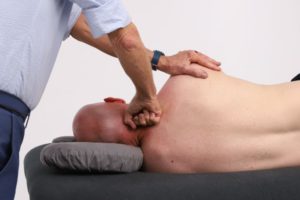San Diego Pain Summit
The San Diego Pain Summit is an international professional conference providing up-to-the-minute research in pain science. This is a place where clinicians and researchers come together to share ideas on ways to move this fundamental body of knowledge from the journals to the therapy room.
My reflections from the first San Diego Pain Summit
Bridging the gap between science and practice.
This was the goal of February’s first annual San Diego Pain Summit, which attracted leading manual therapists and premier experts on pain. Organized by massage therapist Rajam Roose and moderated by bodyworker Jason Erickson, the summit certainly lived up to its tag line: “Clinical applications of pain science for manual therapists.”
Rather than reviewing the physiology of pain science or teaching attendees new techniques, the summit focused on deepening attendees’ understanding of pain and why certain techniques work, as well as broadening the perspective on the best practices for pain management.
“Pain science is a body of knowledge that informs clinical reasoning, making it easier to understand how to work with people in pain,” Erickson said. “It applies to all therapeutic modalities and facilitates working alongside other health-care professionals.” He took a few minutes to speak with me as the conference came to a close. “Whatever methods you practice,” he explained, “knowledge of pain science provides insights into educating clients as part of the therapeutic process.” technique.
Like many in our profession, I’ve been fascinated with pain since Ronald Melzack and Patrick Wall first introduced their now-famous “gate control” theory of pain in the late 1960s. Thanks to advances in technology, along with the growing demand for pain relief among baby boomers, the past decade has seen… an explosion in research on the complex connections between the body, mind, brain, and pain.

In terms of optimal communication, Cory Blickenstaff, PT, emphasized the importance of the words we use and the context we create with our clients. For example, consider saying, “Let’s see if massaging your neck and chest allows your brain to relax the muscles that are pulling your head forward,” rather than telling a client his forward posture is causing him pain. “Change the context, and you change the story,” Blickenstaff said. “If you change the story, you change the outcome.”
More verbiage and context-setting expertise came from presenters such as Diane Jacobs, PT, and Eric Kruger, DPT. Kruger suggested we refrain from promising clients things we may not be able to deliver, such as “fixing” their pain. He said his main objective is to create an experience of safety and security for his clients, so they can perceive that “everything is all right, right now.” Jacobs pointed toward the value of having a hopeful attitude when it comes to setting the right context for healing. “When we’re engaged with another human being physically in a therapy context, there are four nervous systems involved—two human brains and two critter brains,” Jacobs said. “Be hopeful. Expect the nervous system to get itself back on track.” Many of the presenters appeared to accept a challenge presented by Moseley—to question your beliefs and prove yourself wrong—as a key component of the best practices for pain management. “Dump out the toolbox, get rid of the hoarded clutter, and make sure there is space to integrate new material,” said Jason Silvernail, DPT. “Therapists must develop a new process of care and system of reasoning.”
Walking us through the illuminating results of this research was the summit’s entertaining keynote speaker, Lorimer Moseley, PhD. An expert on the science of pain, Moseley serves as professor of clinical neurosciences and chair in physiotherapy at the University of South Australia.
“Stress lives in the brain, and therefore people’s experience of chronic pain is that it increases as they become more stressed,” Moseley said. “The longer they have pain, the better their spinal cord gets at producing danger messages to the brain, even if there is no danger in the tissue.”
Power of Communication
Along with Moseley, a host of other renowned manual therapists and researchers shared ideas on how to move pain research from the journals to the therapy room. One of the summit’s recurring themes was communication—how to improve the dialogue between client and therapist, upgrade communication skills, discourage clients from talking pathology, and assess clients’ value systems to help guide them toward the goal of pain-free movement.
Common Goals
With attendees ranging from massage therapists and chiropractors to physical therapists and physicians, there was an impressive diversity of professional credentials at the summit. However, the one common denominator binding this group together was the desire to better help clients with chronic pain.

“There was a sense of shared purpose, passion, and enthusiasm,” Erickson said. “Every massage therapist I met loved learning how others have integrated pain science into their practices.” According to Erickson, this was the first interdisciplinary conference on pain science specifically for manual therapists. A second San Diego Pain Summit is in the works for 2016.
On sale this week only!
Save 25% off the "Dalton Technique Treasures" eCourse
The “Dalton Technique Treasures” eLearning course is a compilation of some of Erik’s favorite Myoskeletal Alignment Techniques (MAT). Learn MAT techniques to assess and address specific sports injuries, structural misalignment, nervous system overload, and overuse conditions. ON SALE UNTIL July 29th! Get Lifetime Access: As in all our eLearning courses, you get easy access to the course online and there is no expiry date.









